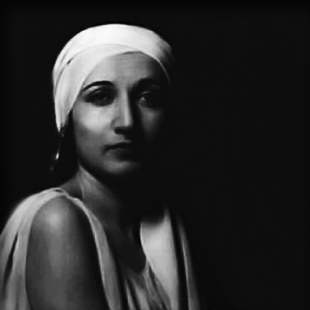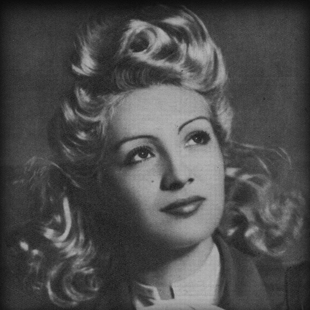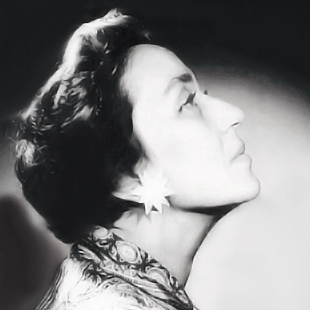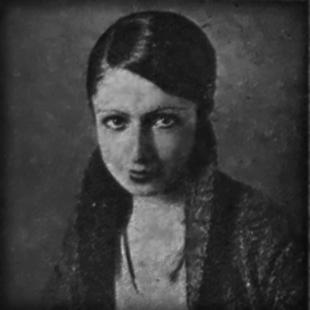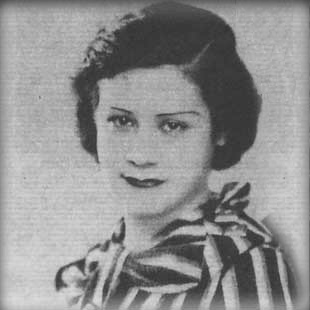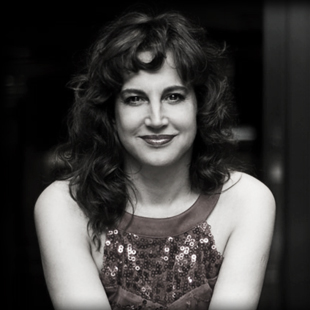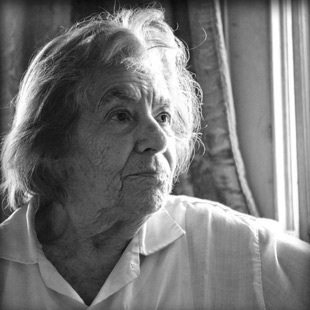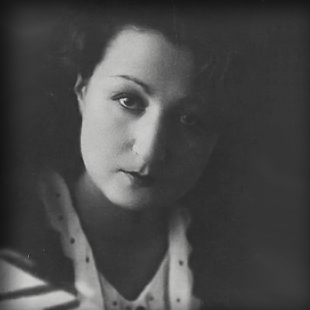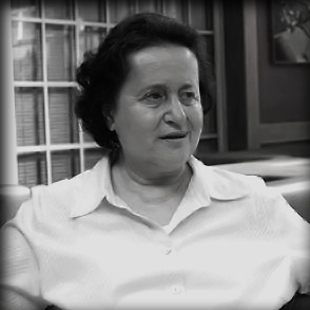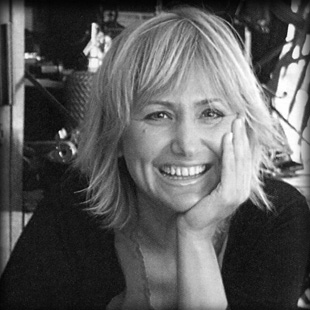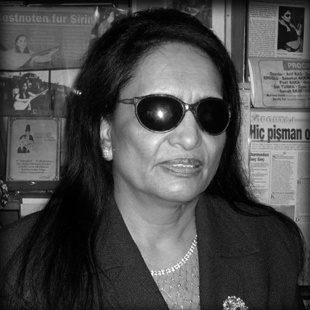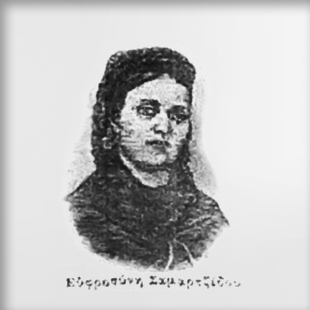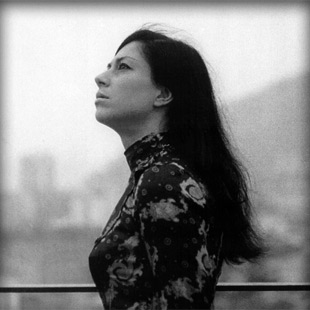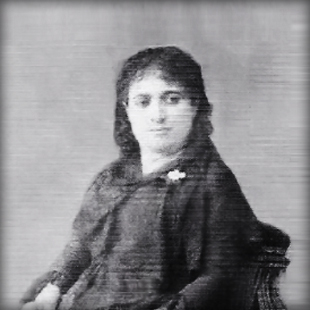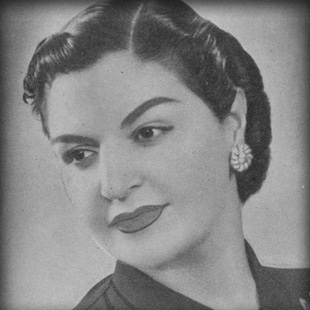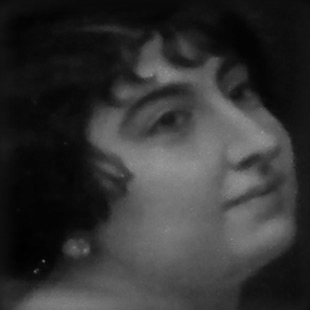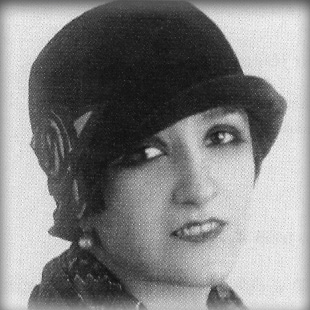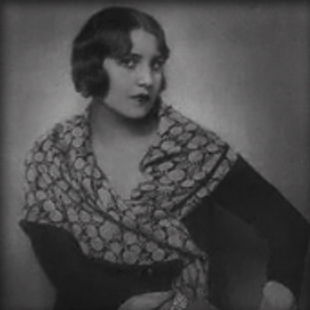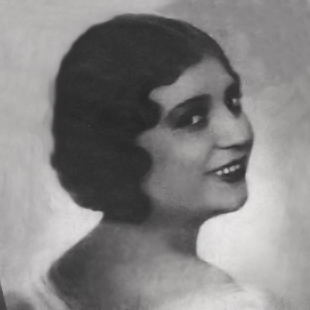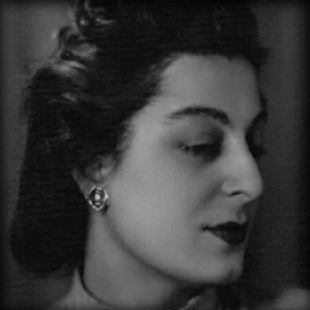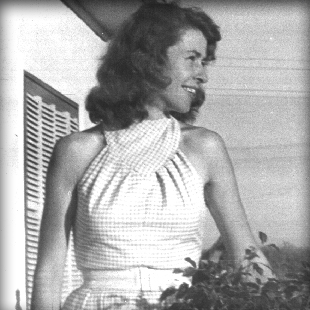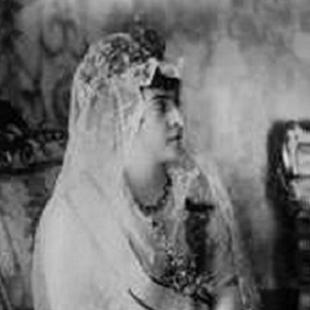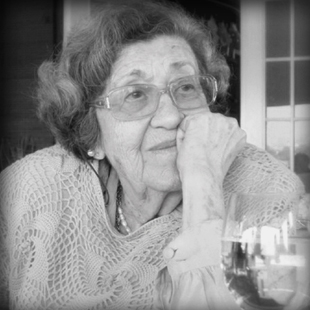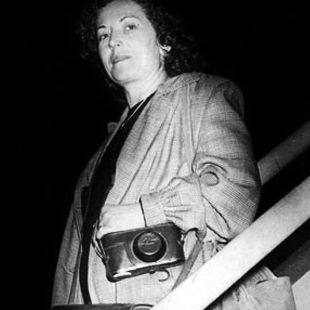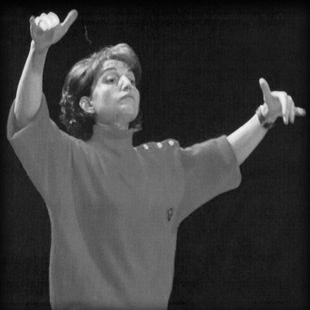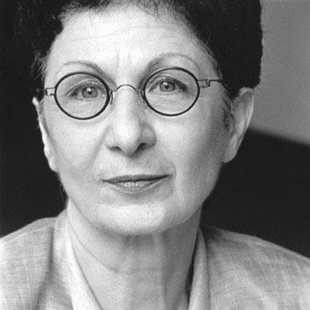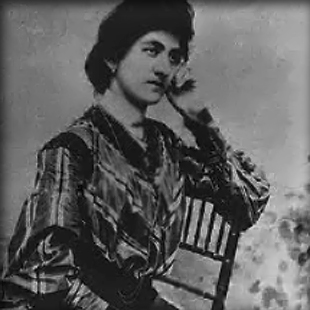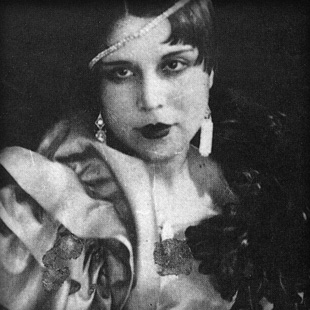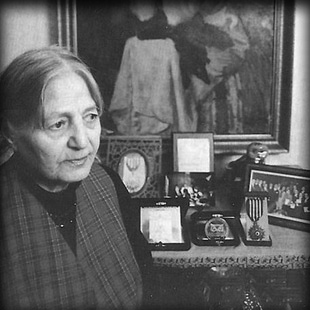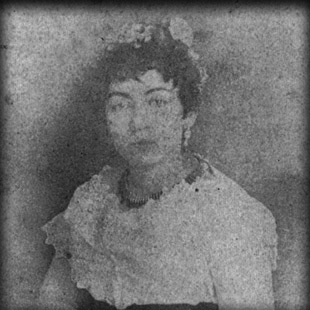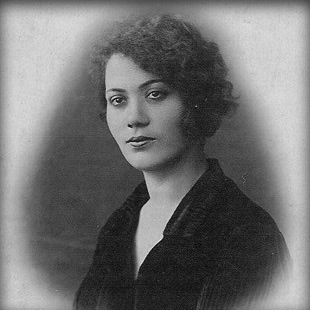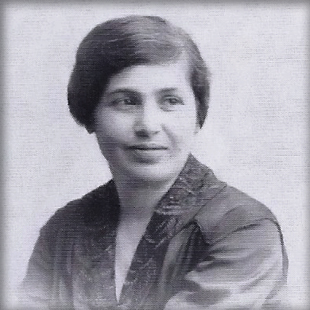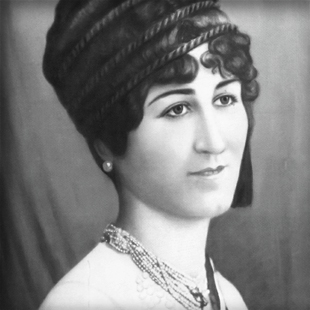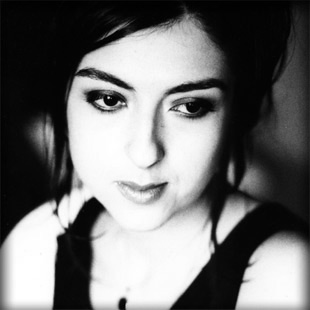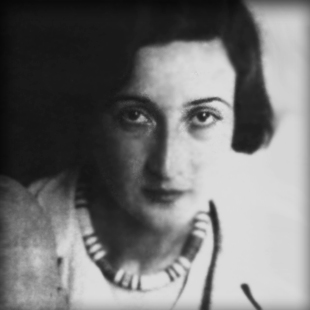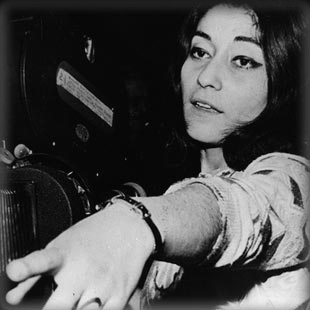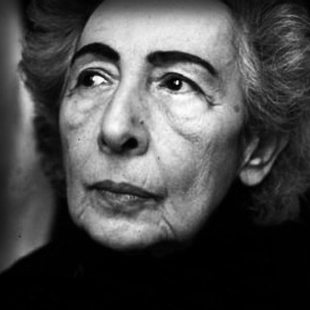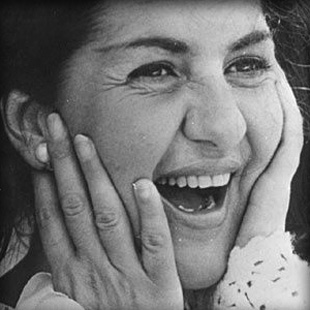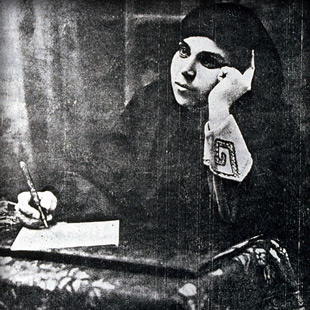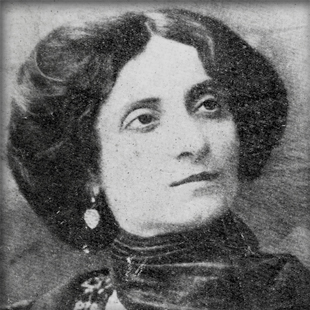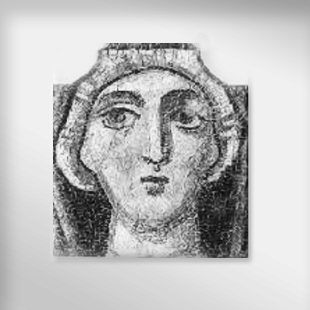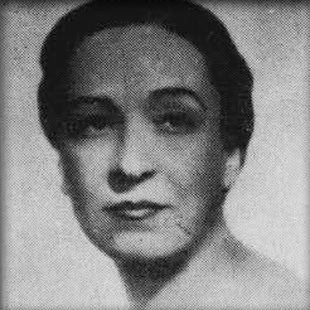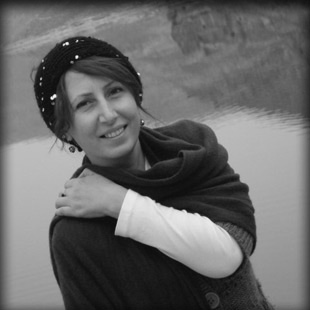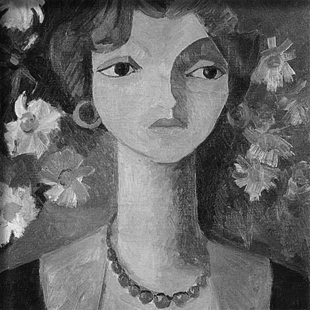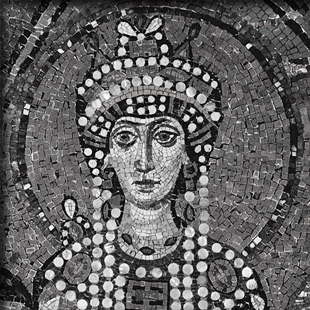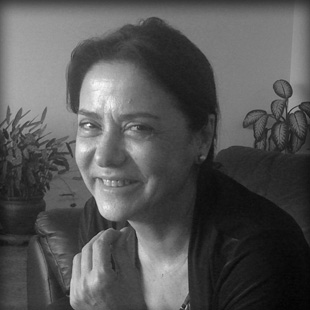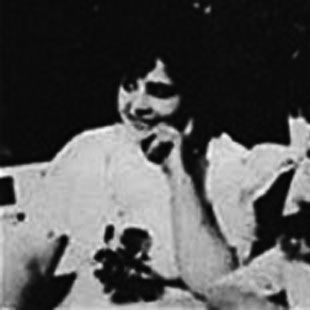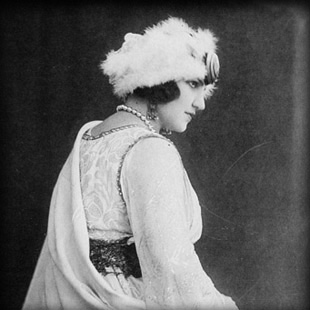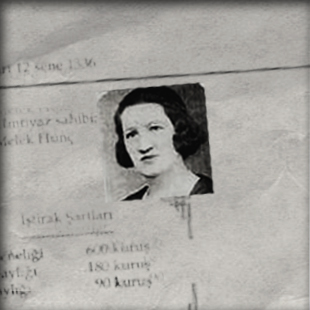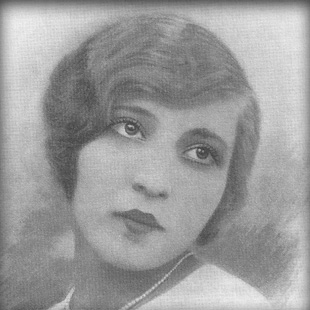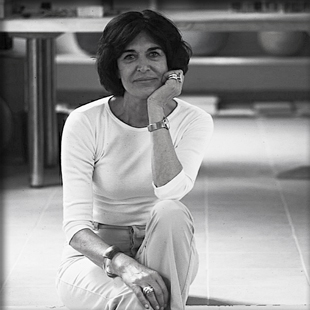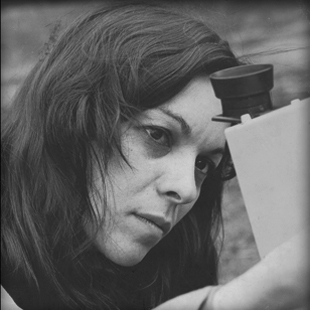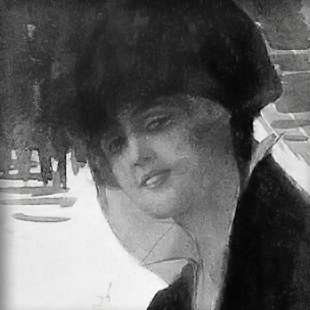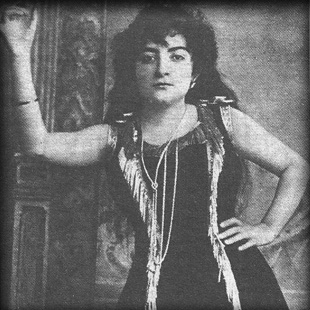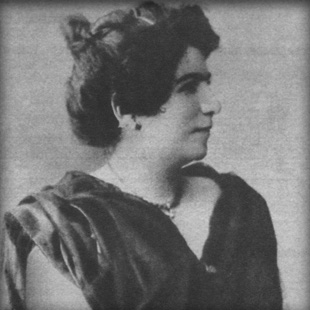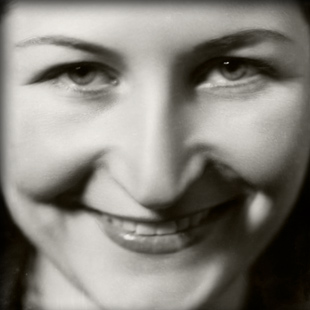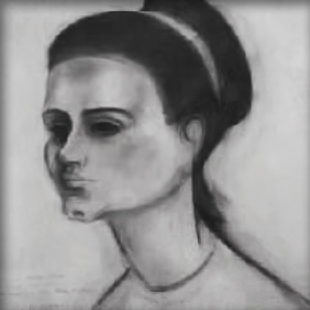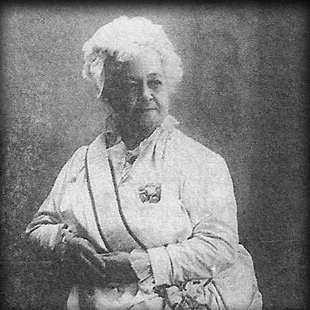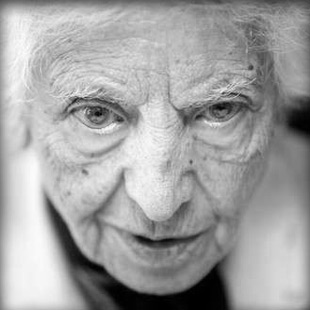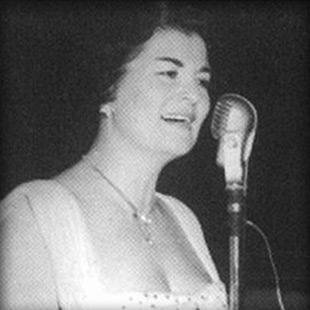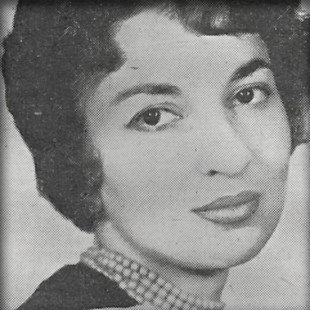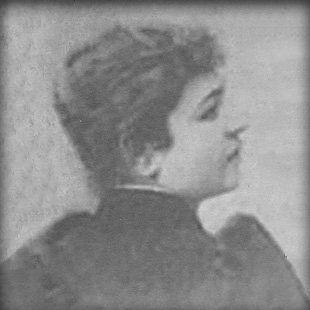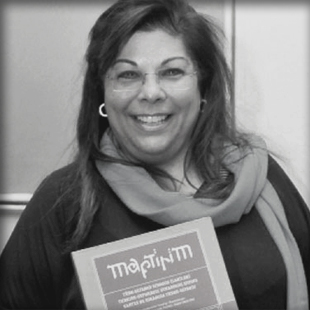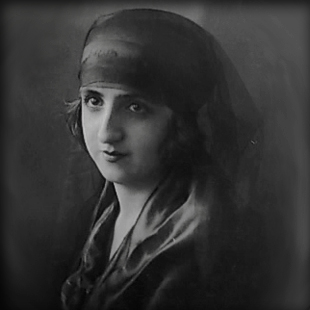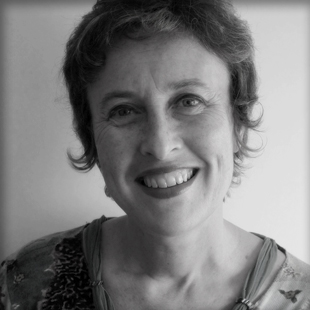Welcome to the website of the Women's Museum Istanbul!
"Inclusion" is an ideal as well as an organisational principle for the Women's Museum Istanbul. The museum's work is a contribution to creating an inclusive women's history of the city of Istanbul.
The museum, operating on a voluntary basis is the first museum of its kind to be established in Turkey and was opened on September 25, 2012 as a virtual museum with a website in Turkish, English, German and Italian. Dedicated to the more than 2600 years of women's history in the city of Istanbul the aim of the museum is to provide a showcase for the history of women in Turkey, a history which was lost, obscured or disowned all too quickly by mainstream opinion, and to share this history as a counterpart to male-dominated historical writing, to create and encourage understanding and dialogue among the generations, genders and among the different cultural and ethnic groups of the city.- How did the Women's Movement of the 1980s influence the women's museums?
In the atmosphere of intensive feminist debates in the 1980s, critical analyses of art and women, history and women, and urbanization and women included criticism of the contents of existing museums.
Inspired by these critiques, some women's groups sought to create an alternative type of museum in the belief that only opposition would bring change.
In the 1980s eight women's museums were created. By the 2000s the number of women's museums has increased.
Citation is only possible with reference.
2012©Meral Akkent
www.istanbulkadinmuzesi.com
Translation into English: Ebru Şanlıtürk, Istanbul, Türkey
Editing: Strane, Susan, Chilmark, Massachusetts, ABD - Why was it necessary to establish the Women's Halls of Fame and Pioneer Women's Memorial Houses?
The earliest modest examples of women's history museums emerged in Australia and in the USA in the form of Women's Halls of Fame and Pioneer Women's Memorial Houses as opposed to institutions that featured only men's biographies. These new projects featured the biographies of famous women in local history.
Women's Halls of Fame emerged out of a need but the initial aim was not to criticize the "divine and immune" content of museums or, in other words, the limited and biased perception of history and ultimately the ruling gender class.
Citation is only possible with reference.
2012©Meral Akkent
www.istanbulkadinmuzesi.com
Translation into English: Ebru Şanlıtürk, Istanbul, Türkey
Editing: Strane, Susan, Chilmark, Massachusetts, ABD - In which year did three women's museums open on two continents?
In 1984 three museums were built on two continents. Frauenmuseum Wiesbaden in Germany chose to focus on matriarchal culture with the slogan "In opposition to the general understanding in arts, culture, and history."
In Australia, the Pioneer Women's Hut (Tumbarumba) was created by a group of female historians who aimed to demonstrate the statement "Small things built up history" by examining the life of women in rural areas.
In Denmark in 1982 a small group of feminist women began to examine the role of women in Danish national culture. The Kvindemuseet i Denmark /Women's Museum in Denmark (Arhus) became an official Danish national women's museum in 1991 and also one of the few women's museums to be funded by the state.
Citation is only possible with reference.
2012©Meral Akkent
www.istanbulkadinmuzesi.com
Translation into English: Ebru Şanlıtürk, Istanbul, Türkey
Editing: Strane, Susan, Chilmark, Massachusetts, ABD - What are the differences between the early examples of women's museums and today's women's museums?
Women's museums first appeared in the world in the 1950s with broad content such as memory halls, local or national women's history. Today's more than 70 women's museums present various content and concepts. They are defined under the category of "purposeful museums" as a result of the increasing data from interdisciplinary studies of women's history which emerged during the second wave of the feminist movement at the end of the 1980s.
- What is known about the earliest examples of women's museums in the 1950s- 60s?
In 1950 in Australia, the Pioneer Women's Memorial House Museum "Miegunyah". was organized in Brisbane, a city famous for its universities.
The museum focuses on the important role women have played in the history of Queensland.
This museum was followed in 1958 by the Pioneer Women Museum, in Ponca City, Oklahoma, USA, which recorded women's history in that state.
In the 1960s only one museum opened, the National Women's Hall of Fame in Seneca Falls, New York, USA which documented women's contributions to the history of the United States.
Citation is only possible with reference.
2012©Meral Akkent
www.istanbulkadinmuzesi.com
Translation into English: Ebru Şanlıtürk, Istanbul, Türkey
Editing: Strane, Susan, Chilmark, Massachusetts, ABD - Do you know what mother, searching for an institution to raise her daughter's consciousness of women's history, helped create a women's museum?
Sociologist Elisabeth Colton shaped the International Museum of Women (initially known as the Women's Heritage Museum)in San Francisco, California (USA). She volunteered at the museum in order to widen its vision while her daughter became acquainted with women's history.
Colton imagined a wider field of interest and influence for the museum so along with the help of a volunteer group, she changed the vision and the name of the museum.
The International Museum of Women has defined itself since 2006 as "an internet museum showing social change, promoting common action globally and making international partnerships." Accordingly, it has become a cross-border museum that designs interactive exhibitions and encourages everyone to contribute.
Citation is only possible with reference.
2012©Meral Akkent
www.istanbulkadinmuzesi.com
Translation into English: Ebru Şanlıtürk, Istanbul, Türkey
Editing: Strane, Susan, Chilmark, Massachusetts, ABD - Which museum was founded in order to show off the "wonders of women in the arts"?
In 1981 in Washington, D.C. (USA) a collector of women's art, Wilhelmina Cole Holloday (*1922), displayed her exclusive collection in her home to visitors on certain days in order to show the "wonders of women's art."
Her dream museum became a reality when she bought and renovated a 78.810 square meters building near the White House.
The National Museum of Women in the Arts (NMWA) (NMWA) opened in the spring of 1987 with the exhibition "American Female Artists: 1830-1930" curated by feminist art historian Dr. Eleanor Tufts.
Citation is only possible with reference.
2012©Meral Akkent
www.istanbulkadinmuzesi.com
Translation into English: Ebru Şanlıtürk, Istanbul, Türkey
Editing: Strane, Susan, Chilmark, Massachusetts, ABD - Which country used the phrase "women's museum" first?
The first museum to use the phrase "women's museum" was the Frauenmuseum, founded in 1981 in Bonn, Germany. Artist Marianne Pitzen and a group of interdisciplinary feminist scholars founded the museum as a response to the lack of representtion of women artists in traditional museums. The Frauenmuseum celebrated its 30th anniversary in 2011 and regards itself as the "mother of all women's museums."
Citation is only possible with reference.
2012©Meral Akkent
www.istanbulkadinmuzesi.com
Translation into English: Ebru Şanlıtürk, Istanbul, Türkey
Editing: Strane, Susan, Chilmark, Massachusetts, ABD - There are cowboys but aren´t there also cowgirls?
Of course there are!
The National Cowgirl Museum and Hall of Fame, was founded in 1973 in Forth Worth, the fifth largest city in the state of Texas, USA. It is the first women's museum to focus on a particular concept -- the documentation of the history of cowgirls.
Citation is only possible with reference.
2012©Meral Akkent
www.istanbulkadinmuzesi.com
Translation into English: Ebru Şanlıtürk, Istanbul, Türkey
Editing: Strane, Susan, Chilmark, Massachusetts, ABD - Is it possible to open a women's museum on a univeristy campus?
Yes! The influence of feminist movements in the 1960s first manifested itself in the context of women's museums in universities in the 1970s.
The small city of Marion, Alabama opened the Alabama Women's Hall of Fame in 1970 on the Campus of Judson College, the fifth women's museum opened at an American university since 1938. The Connecticut Women's Hall of Fame, (ABD, New Haven, Connecticut) founded in 1993 presents as an example to the museums that were first created within the body of a university (in this case Hartford College for Women, University of Hartford) and later became independent instituitions.
The opening ceremony of the Women Culture Museum at Shaanxi Normal University in Xi'an, China in July, 2002 was an unforgettable experience for the female students and scholars. The most important person at the ceremony was the feminist researcher Li Xiaojiang who began work on women's studies in 1949. She introduced the field in China, founded departments of women's studies in various universities, taught the first classes, and organized the first academic conference on women's studies in the country in 1990. She donated her exclusive collection of 400 anthropological and ehtnological objects to Shaanxi Normal University and laid the foundations for the first women's museum in China in 1997.
At first, the university assigned the museum a space of 200 square meters. In 2009 its status was upgraded to become a national museum and there is a new plan to build a modern museum building on campus that will cover an area of 5000 sqaure meters and cost $l.2 million. Also in 2009, a research project was designed by the museum to examine the role of women in matriarchal societies.
Citation is only possible with reference.
2012©Meral Akkent
www.istanbulkadinmuzesi.com
Translation into English: Ebru Şanlıtürk, Istanbul, Türkey
Editing: Strane, Susan, Chilmark, Massachusetts, ABD - Women's memorial houses are also in the category of women's museums. Are there some in Turkey?
Yes. There are three: in Istanbul the Leyla Gencer and the Florence Nightingale memorial houses and in Odemis the Bedia Akartürk's memorial house.
Citation is only possible with reference.
2012©Meral Akkent
www.istanbulkadinmuzesi.com
Translation into English: Ebru Şanlıtürk, Istanbul, Türkey
Editing: Strane, Susan, Chilmark, Massachusetts, ABD - Are women's museums in contact with each other?
Yes. Communication began in July, 2008 in Italy when the Museo della Donna / Frauenmuseum "Evelyn Ortner". Museo della Donna organized the first International Women's Museums Congress. Forty representatives of women's museums from Europe, Asia, America and Africa discussed their problems, shared experiences, and established the website Women in Museum
The second International Women's Museums Congress was held in September, 2009 in Bonn, Germany. In partnership with the Women's Museum of Bonn, the congress produced the first joint exposition of the world's women's museums, "Idols, Role Models, Heroines."
The third congress met in Buenos Aires, Argentina in May, 2010 with representatives from Costa Rica, Peru, and Mexico. The main discussion at the congress concerned the establishment of an association of world women's museums. The fourth International Women's Museums Congress, organized by the National Pioneer Women's Hall of Fame, was held on May 18-21, 2012 in Alice Springs, Australia.
Citation is only possible with reference.
2012©Meral Akkent
www.istanbulkadinmuzesi.com
Translation into English: Ebru Şanlıtürk, Istanbul, Türkey
Editing: Strane, Susan, Chilmark, Massachusetts, ABD - How many women"s museums are in the world at the present?
72 museums.
The 69th women's museum was established in 2009. It was an online Girl Museum in the USA. In 2010 two more museums opened, one in a small village and the other in a huge metropolis; the Women´s Museum and Art Centre opened in Batokunku in Gambia and, in Istanbul, a memorial house for the soprano Leyla Gencer {Link eklenecek http://www.iksv.org/tr/arsiv/p/1/326. In 2011 Mexico opened its first women's museum, the Museo de la Mujer Mexicana.
Citation is only possible with reference.
2012©Meral Akkent
www.istanbulkadinmuzesi.com
Translation into English: Ebru Şanlıtürk, Istanbul, Türkey
Editing: Strane, Susan, Chilmark, Massachusetts, ABD - Have women's museums influenced traditional cultural institutions?
Yes.
The first important effect was the opening of Elizabeth A. Sackler Center for Feminist Art within the body of the Brooklyn Museum in Brooklyn, New York (USA). This center also offers an archive on feminist art.
The second important influence was upon the exhibition "elles@Centrepompidou" in 2009 in the Centre Pompidou'daki in Paris, France. The conception of this inspiring exhibition will hopefully encourage other museums to do similar things. The curator Camille Morineau says this is a reaction to the current state of affairs and describes why:
In the National Gallery (London) only 4 out of 2300 paintings are by female artists. In the Musee d'Orsay and also in the Louvre, the world's most visited museum with 35,000 pieces of art, there is not a single work done by a female artist. Within fours years of becoming a curator in the Centre Pompidou, I brought the percentage of women artists up to 17%. This exhibition of 500 works of art from 200 female artists of the 20th century shows a museum for the first time in the world revealing its female side. Even with this representation of 17% female artists in the Centre Pompidou's collection, I must say, we are still far from equality because this is the same percentage of women representatives in the French parliament.
Read more
Citation is only possible with reference.
http://www.taz.de/1/leben/kuenste/artikel/1/die-kunst-der-anderen/ (Erişim 11.10. 2009)
http://www.centrepompidou.fr/Pompidou/Manifs.nsf/0/44638F832F0AFABFC12575290030CF0D (Erişim Mayıs 2009)
http://www.art-magazin.de/kunst/18864.html (Erişim 26.5.2009)
2012©Meral Akkent
www.istanbulkadinmuzesi.com
Translation into English: Ebru Şanlıtürk, Istanbul, Türkey
Editing: Strane, Susan, Chilmark, Massachusetts, ABD - What are the common grounds among women's museums?
Women's museums represent differences and diveristy.
Women's museums that exist in the middle of a vibrant cultural life in a metropolis and those in a small town or mountain village far from such attractions have different profiles. They have very large or extremely limited budgets, different understandings of space, the presence or absence of the feminist perspective in their works, and many other diverse things.
Probably the only, and therefore the most profound, common point of women's museums is their self-definition as an important institution of culture.
Citation is only possible with reference.
2012©Meral Akkent
www.istanbulkadinmuzesi.com
Translation into English: Ebru Şanlıtürk, Istanbul, Türkey
Editing: Strane, Susan, Chilmark, Massachusetts, ABD - In what ways do women's museums contribute to tradtional museums?
Women's museums enrich the contents of traditional museums and demand and encourage a new point of view regarding history and the arts.
Challenging conventional arrangements, they bring innovation to museum settings with creative alternatives such as mobile museums, spaceless museums and virtual museums.
- What influenced the emergence of women's museums?
The emergence of women's museums can be explained with three words: necessity, obligation and emancipation.
Necessity, because the feminist movement of the 1970s paved the way for interdisciplinary research in women's studies. In this envirionment the idea of women's museums began to flourish. Potentially, they were places in which the results of such interdisciplinary research could be shared with public, and indeed they became so.
Obligation, because the debates of the feminist movement revealed that women could not find themselves in tradtional museums. This situation obligated the creation of spaces in which women could be the subject, and indeed they they were created.
Emancipation, because the feminist movement was the vanguard that attracted an enormous variety of new visions, liberated creative energy, and initiated new projects.
Citation is only possible with reference.
2012©Meral Akkent
www.istanbulkadinmuzesi.com
Translation into English: Ebru Şanlıtürk, Istanbul, Türkey
Editing: Strane, Susan, Chilmark, Massachusetts, ABD - What does the permanent collection of the Women's Museum of Istanbul contain?
The permanent exhibition focuses on the biographies of women who have broken new ground in the art and cultural life of a city built in 660 B.C. E) with the name of Byzantium. The city acquired the name Constantinople in 330 A.D. and after 1453 was known as Kustaniniye, Kostantiniye and Istanbul. It was officially recognized as Istanbul in 1930.
Citation is only possible with reference.
2012©Meral Akkent
www.istanbulkadinmuzesi.com
Translation into English: Ebru Şanlıtürk, Istanbul, Türkey
Editing: Strane, Susan, Chilmark, Massachusetts, ABD - Why did the Istanbul Women's Museum have its name officially registered?
The Istanbul Women's Museum officially registered its name because it is aware of the responsibility such a name brings with it. It is the second women's museum in the world to have its name registered.
The first museum to register its name is The Women's Museum'dur (2000) in Dallas, Texas (USA).
Citation is only possible with reference.
2012©Meral Akkent
www.istanbulkadinmuzesi.com
Translation into English: Ebru Şanlıtürk, Istanbul, Türkey
Editing: Strane, Susan, Chilmark, Massachusetts, ABD - Why is it necessary to have women's museums?
Recovering and remembering the past is very difficult, but very important in the context of women. So many documents have been lost and those that were not well-kept were forgotten, altered or denied.
Women's museums were founded in order to retrieve and to document women's history, to make it visible, to share, and to offer an alternative to existing museums and compel them to change
Citation is only possible with reference.
2012©Meral Akkent
www.istanbulkadinmuzesi.com
Translation into English: Ebru Şanlıtürk, Istanbul, Türkey
Editing: Strane, Susan, Chilmark, Massachusetts, ABD - What does the Women's Museum of Istanbul want to represent?
Every contribution to the creation of a women's history of the city affects our lives today. The Women's Museum of Istanbul envisions a history of the city in which the voices of women from every historical and cultural period are heard and valued equally and each is treated with respect and dignity.
Citation is only possible with reference.
2012©Meral Akkent
www.istanbulkadinmuzesi.com
Translation into English: Ebru Şanlıtürk, Istanbul, Türkey
Editing: Strane, Susan, Chilmark, Massachusetts, ABD - Is there a difference between the Women's Museum of Istanbul and other women's museums?
Yes. The Women's Museum of Istanbul is the first city women's museum with its own building and permanent collection.
The only other city women's museums in the world, in Bremen (1991) and Stuttgart (1994), are both in Germany and neither have their own building and permanent collection.
Citation is only possible with reference.
2012©Meral Akkent
www.istanbulkadinmuzesi.com
Translation into English: Ebru Şanlıtürk, Istanbul, Türkey
Editing: Strane, Susan, Chilmark, Massachusetts, ABD - Which women's museum was the first to use the concept of gender?
Gynaika founded in 2009 in Antwerp, Belgium became the first museum to dedicate its exhibitions to an analysis of the concept of gender from differnt perspectives.
Citation is only possible with reference.
2012©Meral Akkent
www.istanbulkadinmuzesi.com
Translation into English: Ebru Şanlıtürk, Istanbul, Türkey
Editing: Strane, Susan, Chilmark, Massachusetts, ABD - In which neighboring country of Turkey is there a women's museum?
In Ukraine, a group of feminist journalists and artists have founded the virtual women's museum Online women´s Museum'u'u in 2009.
- Which women's museum was founded after 17 years of effort?
The Museo e Instituto de la Mujer Mercedes Valdivieso in Chile is a project of the feminist author Gabriela De Cicco who with a group of feminist artists and researchers succeeded in 2006 after 17 years of effort in founding the museum. It was named after and in commemoration of the first feminist author of Chile, Professor Mercedes Valdivieso (1924-1993).
Citation is only possible with reference.
2012©Meral Akkent
www.istanbulkadinmuzesi.com
Translation into English: Ebru Şanlıtürk, Istanbul, Türkey
Editing: Strane, Susan, Chilmark, Massachusetts, ABD - What happens when a women's library and a gender documentation center merge?
There emerges the Argentine women's museums, Museo de la Mujer in Buenos Aires, Argentina.
As a result of the lobbying efforts of female civic leaders of the city council of Buenos Aires, former and current women ministers, women presidents of universities, political groups like Madras de Plaza de Mayo and the Human Rights Group of the Catholic Church, a great coalition was formed. Emerging from this a group of feminists founded the Museo de la Mujer and incorporated the Women's Library and the Gender Documentation Center within its body.
Graciela Tejero Coni, the director general of museums in Buenos Aires and the great granddaughter of the 1920s feminist Gabriela Laperriere de Coni, became the most ardent supporter this museum project at all levels.
(Mothers of the Plaza de Mayo [Madres de Plaza de Mayo] is an association of women made up of mothers and grandmothers of children and other relatives arrested and disappeared during the military junta period of 1976- 183 who have struggled to bring the generals of the junta to trial.)
Citation is only possible with reference.
2012©Meral Akkent
www.istanbulkadinmuzesi.com
Translation into English: Ebru Şanlıtürk, Istanbul, Türkey
Editing: Strane, Susan, Chilmark, Massachusetts, ABD - Why does a women's museum contain 4% male art?
"Only 4% of the artwork exhibited in museums around the world belongs to women. The acceptance of the work of women in museums is almost impossible. Thousands of the world's museums exhibit men's art while there are only a few museums exhibiting women's art. In the Netherlands there isn't even one single museum of that kind and FemArtMuseum intends to change that." (Founding paper of FemArtMuseum, Amsterdam, Netherlands)
When the museum opens in Amsterdam 96% of the museum will feature women artists and 4% will encompass the work of male artists. Thus it will become the first women's museum to include male artists. With this tactic FemArtMuseum will constantly expose the reality of gender discrimination via its permanent exhibitions.
Citation is only possible with reference.
2012©Meral Akkent
www.istanbulkadinmuzesi.com
Translation into English: Ebru Şanlıtürk, Istanbul, Türkey
Editing: Strane, Susan, Chilmark, Massachusetts, ABD - Where is the Roman women's museum located?
Museo Etnológoco de la Mujer Gitana was founded in Granada, Spain to combat discrimination against Roman women in Spanish society. Funded by the European Union's support program "Equal" (2005-2007) and by the Autonomous Region of Andalucia, the museum promotes the integration of Roman women into the business life of the region.
The museum was situated in a neighborhood with a large Roman population. The active participation of the Association of Roman women and Roman women interested in the project brought about the first women's museum of Roman women's culture within the short space of a year.
Citation is only possible with reference.
2012©Meral Akkent
www.istanbulkadinmuzesi.com
Translation into English: Ebru Şanlıtürk, Istanbul, Türkey
Editing: Strane, Susan, Chilmark, Massachusetts, ABD - Is there a women's museum in the Netherlands?
Yes. The first women's museum in the Netherlands opened in 2006.
The Museum van de Vrouw in Echt, Holland examines the status of Dutch women in a historical context through ethnographical objects collected from the area of Echt-Susteren where the museum is located.
The core of the collection at the Museum van de Vrouw (called the "first women's museum of the Netherlands") consists of clothing and underwear, medications, and tales donated by housewives, midwives, nurses, maids, seamtresses, cooks, and teachers.
During conferences and seminars organized at the museum, the local dialect (Fritz) is purposefully spoken instead of Dutch.
Citation is only possible with reference.
2012©Meral Akkent
www.istanbulkadinmuzesi.com
Translation into English: Ebru Şanlıtürk, Istanbul, Türkey
Editing: Strane, Susan, Chilmark, Massachusetts, ABD - What is the "Virtual Muzey"?
Since 2003 the Virtual Muzey, a virtual women's museum on the website of "Azerbaycan Gender Informasiya Merkezi" (Azerbaijan Center for Gender Information), has included images of documents and interpretations of the history of Azerbaijani women in Azerbaijani, Russian and English.
Citation is only possible with reference.
2012©Meral Akkent
www.istanbulkadinmuzesi.com
Translation into English: Ebru Şanlıtürk, Istanbul, Türkey
Editing: Strane, Susan, Chilmark, Massachusetts, ABD - Can interpretations from a women's and gender perspective be transferred to other museums?
Yes, muSIEum – displaying:gender – displaying:gender was founded in 2003 as a virtual museum.
This project, enabled by the leadership and financial support from the Women's Office of Vienna, has created a virtual collection of selected objects from four museums in Vienna; the Historical Museum, the Technical Museum, the Jewish Museum and the Ethnological Museum. This collection is presented from a women's and gender perspective on the website of muSIEum – displaying:gender.
The purpose of these interpretations is to stimulate research concerning "the difference between the lives of men and women."
Articles discussing and interpreting the virtual art collection as well as an audio library are available on the website.
Citation is only possible with reference.
2012©Meral Akkent
www.istanbulkadinmuzesi.com
Translation into English: Ebru Şanlıtürk, Istanbul, Türkey
Editing: Strane, Susan, Chilmark, Massachusetts, ABD - How should the words "local" and "international" be used for a women's museum?
Çünkü, anlamanın temelinde karşılaştırma yatar ve anlamak sosyal barışın temellerinden birini teşkil eder. Almanya´da 2003 yılında açılan ve sürekli sergisi olmayan Museum Frauenkultur Regional – International (Fürth/Bavyera) her yıl "yerel" ve "uluslararası" kavramlarıyla irdelenmiş bir konuda yeni bir geçici sergi tasarlıyor ve gerçekleştiriyor. Yabancı olanı anlamak için, tanıdıktan yola çıkan bu konsept yardımı ile sergilerinde yerel ve uluslararası kadın yaşamları arasındaki benzerliklerin tartışılmasını hedefliyor.
Türünün ilk örneği olan bu müzeyi ortaya çıkaran birikim ise, milliyet ve ulus gibi kavramların ayrıştırıcı özelliği nedeniyle, kendilerini biz farklı anadillerine sahip bir grubuz olarak tanımlayan bir grup kadının 1989'da Bir Dünyanın Kadınları - Kadın Günlük Yaşamını Araştırma Merkezi'nde (Frauen in der Einen Welt – Zentrum für interkultuelle Frauenalltagsforschung) yapılan çalışmalarıyla oluştu. Kültürlerarası karşılaştırma yöntemiyle kadın günlük yaşamını inceleyen araştırmalar ve elde edilen verilerle tasarlanan gezici sergilerden oluşan toplam 12 yıllık deneyim, 2001 yılında grup üyelerinden sosyolog Meral Akkent'in girişimiyle Museum Frauenkultur Regional – International'in kurulmasına yol açtı.
------Discussions about discrimination as well as developing strategies against discrimination are highly investigated issues in Western european migration areas.
In this context, the Museum Frauenkultur Regional – International – International in Furth, Bavaria (Germany) opened in 2003 designing the contents of their exhibitions to oppose discrimination and stating their concept as "understanding is the foundation of comparison."
But the history of this museum started in 1989. Rejecting the notions of nationality and nationhood because of their discriminating nature and defining themselves as "a group of people with different mother tongues," a group of women in 1989 founded the Women of One World -- Center for Intercultural Research of Women's Daily Lives.
During the 1990s this center researched the daily lives of women using the method of intercultural comparison in the context of migration, a method not yet embraced in German academic circles.
Assembling the data of this research, mobile exhibitions were designed to combat discrimination. The Museum Frauenkultur Regional – International was founded in 2001 on the initiative of a Turkish speaking sociologist, Meral Akkent, one of the group members.This museum, the first to use the "method of Intercultural comparison," supports and encourages newly established women's museums to use the same method.
In 2008 Lydia Olga, originally from Senegal, opened the Musée de la femme in Quebec, Canada and thus became the second migrant woman to realize a women's museum project in the country in which she lives.
Citation is only possible with reference.
2012©Meral Akkent
www.istanbulkadinmuzesi.com
Translation into English: Ebru Şanlıtürk, Istanbul, Türkey
Editing: Strane, Susan, Chilmark, Massachusetts, ABD - What is the answer to the question "Why on earth are there 8000 museums in the world and not a single comprehensive women's history museum?"
Many are breaking new ground and The Women's Museum has opened!
a target="_blank" href="http://www.thewomensmuseum.org">The Women's Museum in Dallas, Texas (USA) has achieved may "firsts." It is the first women's museum to obtain a patent and the most modern technically-equipped women's museum. It managed to raise donations of $30 million in less than four years, the largest amount contributed to a women's project. During the museum's formation, the AT & T Foundation (USA) donated $10 million.
In 1996 Cathy Bonner, the Executive Director of the Texas Department of Commerce, who had actively campaigned against violence to women in the 1970s, asked herslef, "Why on earth are there 8000 museums in the world and not a single comprehensive women's history museum?" The idea for establishing this museum was born.
Citation is only possible with reference.
The Women's Museum defines its raison d'etre as both an investment for the future and as an educational enterprise to remind women of future generations that they reach their positions in society "only by standing on the shoulders of the bold and brave women of the past."
2012©Meral Akkent
www.istanbulkadinmuzesi.com
Translation into English: Ebru Şanlıtürk, Istanbul, Türkey
Editing: Strane, Susan, Chilmark, Massachusetts, ABD - What frugal witch has a museum named after her?
When Henrietta Howland Robinson Green died, American women didn't have the right to vote nor were they taken seiously in business life. Despite all that, Henrietta became a very successful businesswomen and the first woman to earn a fortune on the New York Stock Exchange.
Businessmen, annoyed by her success, reverted to the mentality of the Middle Ages towards extraordinary women and gave her the nickname "The Wall Street Witch." At the time of her death, her fortune amounted to $2.1 in today's money and she was known for her frugality. Henrietta Howland Robinson Green's house was turned into a museum in 2000 and has been named as 'A Frugal Woman's Museum' in reference to her character. A Frugal Woman's Museum in New Bedford, Massachusetts (USA) commemorates Henrietta Howland Robinson Green (1834 -1916) and all other women who earned a place in the business and finance world.
Citation is only possible with reference.
2012©Meral Akkent
www.istanbulkadinmuzesi.com
Translation into English: Ebru Şanlıtürk, Istanbul, Türkey
Editing: Strane, Susan, Chilmark, Massachusetts, ABD - What happens when a women's museum is founded in a village?
The village of Faucigny (population 482) has only a small church of note, but in 1999 it became a center of attraction for tourists following the opening of the first women's museum in France.
Musée de la Femme documents a cross- section of women's history by exhibiting the local objects of urban middle and upper middle class women between 18th and 20th centuries. In the forests of Bregenzwald, Austria, the women of a village called Hittisau (population 1883) have left running guest houses, working in the fields, and taking care of their households, children and animals in the shadows in their enthusiasm for their new women's museum.
The Frauenmuseum which does not have a permanent collection, presents temporary exhibitions about women's issues in the past and present from the perspective of women.
The village women, whose ages range from 18-80, fulfill the duties such as installing the exhibitions, guiding visitors, and providing security personnel. They also contribute to the content of the exhibitions through their life experience and knowledge.
Historian and art historian Elisabeth Stockler dreamed of establishing a museum in a village and thus enriching the lives of women there as well as rejuvenating village life. The undeniably exciting 11 year history of the Frauenmuseum for the women of the village has proved Stockler right.In recognition of the compatibility of the museum with its forest setting, this modern museum is entirely financed by the town budget. The Frauenmuseum continues to integrate village women into museum work and makes the village government proud to have the first women's museum in Austria.
Citation is only possible with reference.
2012©Meral Akkent
www.istanbulkadinmuzesi.com
Translation into English: Ebru Şanlıtürk, Istanbul, Türkey
Editing: Strane, Susan, Chilmark, Massachusetts, ABD - Which women's museum doesn't have the word "museum" in its name?
The answer is the Center for the Advancement of Working Women in Tokyo, Japan. This museum widens the concept of a women's museum as it is incorporated into the body of the Japan Association for the Advancement of Working Women. It is the first women's museum to be integrated into a high synergy building facility with units such as Career Support, Help for Business Establishment, Medical Counselling, Women's Library, Documentation Center for Women's Groups and Programs for Women's Culture.
Between 2000-2007 the project helped one million people. Its stated aim is "Support for women who work or are willing to work in order for them to chieve a healthy an dynamic individual working style."
The museum critically examines the working life of women in three historical periods: women as industrial workers following the 1868 Japanese modernization; women in working life during and after the Second World War; and the process towards gender equality after 1975.
Citation is only possible with reference.
2012©Meral Akkent
www.istanbulkadinmuzesi.com
Translation into English: Ebru Şanlıtürk, Istanbul, Türkey
Editing: Strane, Susan, Chilmark, Massachusetts, ABD - What does Muso Kunda mean?
Muso Kunda means "women's side" in the Mali language./p>
Muso Kunda - Musée de la Femme, the second women's museum in Africa (after the one in Senegal) opened in 1999 under the leadership of feminist historian, philosopher, and novelist Professor Adame Ba Konare in commemortion of "the long path women have walked for emancipation."/p>
The museum exhibits the female side of Mali with a pluralistic understanding of culture groups such as the Kayes, Djenne, Mopti, and Tombouctou./p> Citation is only possible with reference.
2012©Meral Akkent
www.istanbulkadinmuzesi.com
Translation into English: Ebru Şanlıtürk, Istanbul, Türkey
Editing: Strane, Susan, Chilmark, Massachusetts, ABD - How many years of struggle are needed to make a museum out of a house where women's history was written?
A 53 year struggle demanding "The history of women's suffrage was written in this house; this house should be a museum" successfully resulted in the opening of the Susan B. Anthony Haus in Rochester, New York (USA) in 1998.
In this house Susan B. Anthony (1820-1910), the first advocate of women's suffrage, who died before woman's suffrage was declared, worked with other activist women in the women's movement as they documented their demands. At one point she was under house arrest.
Citation is only possible with reference.
2012©Meral Akkent
www.istanbulkadinmuzesi.com
Translation into English: Ebru Şanlıtürk, Istanbul, Türkey
Editing: Strane, Susan, Chilmark, Massachusetts, ABD - What should be done to draw attention to the Girl Scouts in women's history?
Dawn Elizabeth Monroe, a Girl Scout volunteer, created her own archive after she failed to find material about women's history in Canada to inform her troop.
She publicized her archive online in 1998 so her fellow Girl Scout leaders could utilize it for their troops.
The project of historian, archivist, librarian Dawn Elizabeth Monroe, the Online Women´s Museum has grown in content since 1998.
Monroe hopes to raise the awareness in girls about women's history through puzzles and games suitable for their age such as "With which important woman do I share my birthday?", "Who are the women on Canadian stamps?", "First Successes," or "Aphorisms from women."
Citation is only possible with reference.
2012©Meral Akkent
www.istanbulkadinmuzesi.com
Translation into English: Ebru Şanlıtürk, Istanbul, Türkey
Editing: Strane, Susan, Chilmark, Massachusetts, ABD - In which country is located the museum that stated its raison d'etre as "There is still more to do. If we and future generations are to learn all the lessons of the past upon which to build the future, we must be aware of the true experiences and contributions of women"?
The United States of America.
The National Women's History Museum was organized in Washington, D.C. (USA) in 1996 with the principle, "A better world awaits the generation that absorbs what women and men have to share about life from a joint perspective. Only then will discrimination and violence in the world cease. If we and future genrations are to learn the lessons of the past upon which to build the future, we must be aware of the true experiences and contributions of women." The founders worked online while searching for an appropriate building.
The National Women's History Museum wanted to find a site near the National Mall where they could be neighbors with the other American national museums and with the Capitol for having political impact. At last in 2009 the group found a place on a street crossing the National Mall which they regard as "the best place for a museum that comprehensively shows the success of women."
The process of lobbying to persuade the Senate to fund the purchase of the building continues into 2012.
Citation is only possible with reference.
2012©Meral Akkent
www.istanbulkadinmuzesi.com
Translation into English: Ebru Şanlıtürk, Istanbul, Türkey
Editing: Strane, Susan, Chilmark, Massachusetts, ABD - Are there any women's museums established by the state?
Yes. In Vietnam, Sudan and Romania.
In Vietnam in 1995 two museums opened in the cities of Ho Chi Minh and Hanoi, making Vietnam the first country in which two women's museums were opened in one year.
Nam Bo Womens´ Museum and The Hanoi Women's Museum (Hanoi) were established through the initiative of the Vietnamese Women's Union and the financial support of the Ministry of Culture. Both museums reflect state policies regarding the ideology of Vietnamaese women.
Both museums present prominent women who fought against French and American armies and women workers who excelled in industrial or agricultural production. The museums exhibit the private possessions of these women and other ethnological objects of their regions.
The museums also present an historical overview of objects that demonstrate the "duties" of women in the household and also adornment of women beginning with the Age of Dong Son (1st century BCE).
The Women's Museum in Omdurman, Sudan was founded within the Department of Women's Studies at Ahfad Univeristy for Women based on a proposal from Professor Ahmad M. A. Hakim, Secretary General of the National Corporation for Antiquities and Museums and a member of the Advisory Committee of the Documentation Unit for Women's Studies.
The aims of the museum include documenting the current political, social and economic status of Sudanese women, protecting the cultural heritage of women, presenting the prominent figures of the Sudanese Women Movement, and providing an information center for Women's Studies and future generations. The museum does not have an official website.
The Museum of the Romanian Peasant Woman in Maramures was founded in 2001 in the small city of Dragonmiresti, Romania (population 3167). The museum makes reference to the socialist past of the country while celebrating the women of the village of Maramures who have maintained Christianity and their traditions, language and regional clothing for centuries. It honors "all women who have helped the development of humanity in their roles as mother, grandmother, wife and sister."
Citation is only possible with reference.
Maramures
With this introductory expression, the museum presents a life model for women which is defined according to traditional roles, as seen in the case of the women's museums in Vietnam.
2012©Meral Akkent
www.istanbulkadinmuzesi.com
Translation into English: Ebru Şanlıtürk, Istanbul, Türkey
Editing: Strane, Susan, Chilmark, Massachusetts, ABD - Which country first funded a women's museum from the state budget?
Norway.
A group of women with the intention of establishing a women's museum, presented their project to the Norwegian Ministry of Consumer Rights in 1989. The Ministry decided to finance the project on the condition the program research women's participation in political life and exhibit this aspect of "women's history" in the city museum. Thus the story of the Kvinnemuseet´in (National Women's Museum) began and the museum opened in 1995 in Kongsvinger, Norway.
In 1998 the Kvinnemuseet gained the title of "official state museum" and became one of the rare museums funded by the state.
Citation is only possible with reference.
2012©Meral Akkent
www.istanbulkadinmuzesi.com
Translation into English: Ebru Şanlıtürk, Istanbul, Türkey
Editing: Strane, Susan, Chilmark, Massachusetts, ABD - What does the first women's museum in Italy exhibit?
Evelyn Ortner, a collector of women's clothes since the age of 18, founded the Museo della Donna / Frauenmuseum "Evelyn Ortner„ in Merano, Italy in 1991 along with a group of women historians. The museum exhibits a cross section of women's clothing representing 200 years of European history.
Citation is only possible with reference.
2012©Meral Akkent
www.istanbulkadinmuzesi.com
Translation into English: Ebru Şanlıtürk, Istanbul, Türkey
Editing: Strane, Susan, Chilmark, Massachusetts, ABD - Where was the first women's museum on suffrage located?
Defining itself with this statement, "The struggle of the suffragettes for the right to vote began in the West and in honor of this movement our museum is founded," the Women of the West Museum was opened in 1991 in Los Angeles, California (USA).
Citation is only possible with reference.
2012©Meral Akkent
www.istanbulkadinmuzesi.com
Translation into English: Ebru Şanlıtürk, Istanbul, Türkey
Editing: Strane, Susan, Chilmark, Massachusetts, ABD - How many "mobile" women's museums hitherto brought the information to the people?
Unfortunately only one: the Women's History Museum – on wheels in Washington, D.C. (USA) Jenne Schramm, a history teacher and librarian, designed an old school bus entirely on her own as a mobile museum featuring the life stories of 20 women who played important roles in American history. She toured with her bus and promoted women's history between 1991 and 2009. She parked her bus in front of schools, libraries and churches and brought knowledge to her visitors.
Jeanner Schramm ended her work in 2009 and donated her Women's History Bus and her entire collection to the National Women's History Museum´a, founded 1966 (Washington D.C., USA).
- How did the city/ women's museums emerge?
Developments in the research of women's history enabled women's museums to specialize in certain subjects. The importance of city women's history in women's memories was particularly recognized. The city/ women's museums emerged in this context. Today, there are city/ women's museums only in Germany.
In order to present an alternative to existing city museums to their critics, a group of feminist historians founded Bremer Frauenmuseum'u in 1991. They illuminated the women's history of their city and thus redefined the meaning of the "City Museum." Being the first museum of its kind, this project does not exhibit "in its own place" but in public spaces, making it one of the rare museums "without a building."
Stuttgarter Frauenmuseum'dur, founded in 1994 in Stuttgart, Germany shares the same concept as the Bremer Frauenmuseum. It was founded by a group of feminist historians who researched the women's history of the city and sought an alternative to the current city's policies.
Citation is only possible with reference.
2012©Meral Akkent
www.istanbulkadinmuzesi.com
Translation into English: Ebru Şanlıtürk, Istanbul, Türkey
Editing: Strane, Susan, Chilmark, Massachusetts, ABD - The history of women in slavery is being exhibited in Africa's first women's museum. Do you know in which country is it located?
Senegal.
The first women's museum in Africa and the first private museum of Senegal was founded in 1994 as the result of one woman's dream and the creative work of a group of women, as is the case for every women's museum.
In Gorée Island, Annette Mbaye d'Erneville and her group organized a small building right across the Museum of Slavery as a "family house and center for meetings and vocational education". They named the place the a target="_blank" href="http://mufem.org/">Musée de la Femme "Henriette Bathily„.
The museum features the history of local women before slavery and women during slavery. Today women in Sengal live in cities as well as rural areas and their lives cover a wide spectrum from grain workers, academicians, politicians, activists, peddlars, writers, ceramists, syndicalists to artisans trained in traditional crafts.
Henriette Bathily, for whom the museum is named, is a dancer who played an important role in arts and culture in the early years of independence in Senegal in 1960.
Citation is only possible with reference.
2012©Meral Akkent
www.istanbulkadinmuzesi.com
Translation into English: Ebru Şanlıtürk, Istanbul, Türkey
Editing: Strane, Susan, Chilmark, Massachusetts, ABD - Which women's museum redefined the concept of the "Pioneer woman"?
National Pioneer Women's Hall of Fame (Alice Springs, Australia).
In 1993 this museum adopted "every woman walking on the path she has chosen is a pioneer" as its working principle in order to examine Australian women's history from the perspective that "the honor of being a pioneer" is possible for every women.
Citation is only possible with reference.
2012©Meral Akkent
www.istanbulkadinmuzesi.com
Translation into English: Ebru Şanlıtürk, Istanbul, Türkey
Editing: Strane, Susan, Chilmark, Massachusetts, ABD - In which city in India was the first women's museum opened?
In 1990, Chi.Na.Mangala, a teacher, founded the Shashwati Women's Museum in Bangalore, the first women's museum in India. The museum is housed in the school building in which she collected objects about Indian women's culture while she was headmistress.
The Shashwati Women´s Museum does not have an official website.
See: http://www.kamat.com/kalranga/women/shashwati/index.htm
Citation is only possible with reference.
2012©Meral Akkent
www.istanbulkadinmuzesi.com
Translation into English: Ebru Şanlıtürk, Istanbul, Türkey
Editing: Strane, Susan, Chilmark, Massachusetts, ABD - Is there a museum founded in order to entirely change the knowledge taught at schools and universities about the role of women in history?
Yes there is!
Michigan Women's Historical Center & Hall of Fame'in at Lansing, Michigan (USA) emerged when a group of female science researchers founded the Michigan Women's Studies Association in 1973.
This group began their studies at the campus of Michigan State University with the aim of "changing everything that is being taught in schools and universities about the historical role of women living in the state of Michigan." They moved into their own museum building in 1987.
Citation is only possible with reference.
2012©Meral Akkent
www.istanbulkadinmuzesi.com
Translation into English: Ebru Şanlıtürk, Istanbul, Türkey
Editing: Strane, Susan, Chilmark, Massachusetts, ABD - How much has the International Federation for Research in Women's History increased the number of women's museums?
With the support of the International Federation for Research in Women's History (IFRWH), the field of women's history became accepted in academia in the 1990s. Women's history has also become the common focus of 18 newly founded museums in the 1990s.
Citation is only possible with reference.
2012©Meral Akkent
www.istanbulkadinmuzesi.com
Translation into English: Ebru Şanlıtürk, Istanbul, Türkey
Editing: Strane, Susan, Chilmark, Massachusetts, ABD - Why would a museum open with the aim of "being closed down one day"?
While every museum wants to be known and recognized, Das verborgene Museum'u (Hidden Museum) was founded in Berlin in 1986.
The founders of the museum, a group of female art historians, stated their aim as saving female artists who hadn't attracted attention from being forgotten. They created an institution, Das verborgene Museum, where the works of "hidden" female artists which were previously stored in museum warehouses could be displayed until they found a place in exhibitions.
Thanks to this museum, artists such as Gertrud Arndt, Dorothy Bohm, Ida Gerhardi, Martha Hegemann, Lily Hildebrand, Lotte Jacobo, Lotte Laserstein, Käthe Loewenthal, Else Lohmann, Marie Vassillieff, Hilde Westström and Yva have been "rediscovered".
Citation is only possible with reference.
2012©Meral Akkent
www.istanbulkadinmuzesi.com
Translation into English: Ebru Şanlıtürk, Istanbul, Türkey
Editing: Strane, Susan, Chilmark, Massachusetts, ABD
